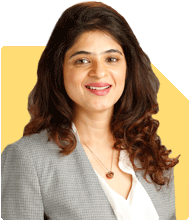Should I close my home loan to invest in other assets?
Ramalingam Kalirajan |9777 Answers |Ask -Follow
Mutual Funds, Financial Planning Expert - Answered on Jul 15, 2024
He has an MBA in finance from the University of Madras and is a certified financial planner.
He is the director and chief financial planner at Holistic Investment, a Chennai-based firm that offers financial planning and wealth management advice.... more

Hi sir , I have a balance home loan left of Rs 19L , though I can close the home loan with my savings available, I have kept the same just to save on tax and for lesser interest rate. I'm thinking of clearing complete home and take a new loan on the same property to invest the amount in other assets. Kindly advice would it be a right decision.
Let's break down and assess this situation.
Tax Benefits of Home Loans
Home loans provide tax benefits under Sections 24 and 80C of the Income Tax Act. You can claim deductions on interest payments up to Rs 2 lakhs per annum under Section 24. Principal repayments up to Rs 1.5 lakhs per annum are deductible under Section 80C. These deductions reduce your taxable income, offering significant tax savings.
However, tax benefits should not be the sole reason to retain a loan. Your financial strategy should consider the overall impact on your net worth and cash flow.
Interest Rates and Opportunity Cost
Home loans typically offer lower interest rates compared to other loans. If your home loan interest rate is lower than the returns you could earn from investing, retaining the loan might be beneficial. For instance, if your loan interest rate is 8% and you expect a 12% return from investments, your net gain is 4%.
However, if market conditions change and investment returns fall below your loan interest rate, retaining the loan might not be wise. Evaluating the opportunity cost is crucial.
Paying Off the Loan
Paying off your home loan with savings provides peace of mind and a debt-free status. It reduces monthly outflows, freeing up cash for other purposes. Additionally, you save on interest payments over the loan tenure.
However, paying off the loan means using funds that could potentially earn higher returns elsewhere. You need to assess whether the certainty of saving on interest outweighs the potential higher returns from investments.
Taking a New Loan
Taking a new loan on the same property to invest in other assets is a form of leveraging. Leveraging can amplify returns but also increases risk. If your investments perform well, the strategy pays off. However, if they underperform, you face higher debt with no corresponding returns.
Assessing Investment Options
When considering leveraging, evaluating potential investments is crucial. Diversifying into mutual funds, equities, or other assets can offer higher returns than the home loan interest rate. However, each comes with its risk and return profile.
Mutual Funds: These offer professional management and diversification. Actively managed funds, overseen by expert fund managers, aim to outperform the market. This can provide better returns than index funds, which merely replicate market indices.
Equities: Direct stock investments can yield high returns but come with high risk. Market volatility can impact returns, and it requires substantial knowledge and time to manage effectively.
Debt Instruments: Safer than equities, these offer fixed returns but may be lower than potential equity returns. Balancing between debt and equity can provide stability and growth.
Disadvantages of Index Funds
Index funds, while popular, have certain drawbacks. They passively track market indices and lack active management. This means they cannot outperform the market, and you miss the potential for higher returns. Additionally, during market downturns, index funds decline as much as the market.
Actively managed funds, on the other hand, have fund managers making strategic decisions. This can potentially offer better returns, especially in volatile markets. The expertise of fund managers helps in navigating market fluctuations and capitalizing on opportunities.
Disadvantages of Direct Funds
Direct funds are purchased directly from mutual fund companies, bypassing intermediaries. While they have lower expense ratios, they require substantial investment knowledge and time. Investors need to monitor and rebalance portfolios regularly, which can be challenging.
Regular funds, purchased through certified financial planners (CFPs), offer professional advice and management. CFPs help in selecting suitable funds, regular monitoring, and rebalancing. The guidance of a CFP can enhance investment returns and align them with your financial goals.
Risk Management and Diversification
Leveraging increases exposure to market risks. Diversifying investments across asset classes reduces risk. A balanced portfolio of equity, debt, and mutual funds can provide stability and growth.
Equity: Offers high returns but high risk. Suitable for long-term goals.
Debt: Provides stability with lower returns. Good for short to medium-term goals.
Mutual Funds: Offer diversification and professional management. Balance risk and return.
Evaluating Your Financial Goals
Assessing your financial goals helps in making informed decisions. If your goal is long-term wealth creation, investing in equities and mutual funds can be beneficial. For short-term goals, debt instruments provide stability.
Cash Flow and Liquidity
Maintaining adequate liquidity is crucial. Ensure you have sufficient emergency funds before leveraging. A well-planned cash flow ensures you can meet loan repayments and manage unexpected expenses.
Professional Advice and Monitoring
Regular consultation with a certified financial planner (CFP) ensures your investments align with your goals. CFPs provide expert advice, helping in selecting suitable investment options and regular portfolio monitoring. Their guidance can enhance returns and manage risks effectively.
Your Decision
Considering the above factors, your decision should align with your risk tolerance, financial goals, and cash flow requirements. Paying off the loan provides peace of mind and reduces debt. However, if you have a higher risk tolerance and a well-diversified investment strategy, leveraging can potentially enhance returns.
Best Regards,
K. Ramalingam, MBA, CFP,
Chief Financial Planner,
www.holisticinvestment.in
You may like to see similar questions and answers below
Milind Vadjikar | Answer |Ask -Follow
Insurance, Stocks, MF, PF Expert - Answered on Sep 09, 2024
Ramalingam Kalirajan |9777 Answers |Ask -Follow
Mutual Funds, Financial Planning Expert - Answered on Aug 31, 2024
Ramalingam Kalirajan |9777 Answers |Ask -Follow
Mutual Funds, Financial Planning Expert - Answered on Nov 18, 2024
Ramalingam Kalirajan |9777 Answers |Ask -Follow
Mutual Funds, Financial Planning Expert - Answered on Nov 18, 2024
Ramalingam Kalirajan |9777 Answers |Ask -Follow
Mutual Funds, Financial Planning Expert - Answered on May 15, 2025
Ashwini Dasgupta |114 Answers |Ask -Follow
Personality Development Expert, Career Coach - Answered on Jul 18, 2025
Dr Nagarajan J S K |1894 Answers |Ask -Follow
NEET, Medical, Pharmacy Careers - Answered on Jul 18, 2025
Dr Nagarajan J S K |1894 Answers |Ask -Follow
NEET, Medical, Pharmacy Careers - Answered on Jul 18, 2025
Dr Nagarajan J S K |1894 Answers |Ask -Follow
NEET, Medical, Pharmacy Careers - Answered on Jul 18, 2025
Dr Nagarajan J S K |1894 Answers |Ask -Follow
NEET, Medical, Pharmacy Careers - Answered on Jul 18, 2025
Dr Nagarajan J S K |1894 Answers |Ask -Follow
NEET, Medical, Pharmacy Careers - Answered on Jul 18, 2025
Dr Nagarajan J S K |1894 Answers |Ask -Follow
NEET, Medical, Pharmacy Careers - Answered on Jul 18, 2025
Dr Nagarajan J S K |1894 Answers |Ask -Follow
NEET, Medical, Pharmacy Careers - Answered on Jul 18, 2025

You have provided insufficient information to predict or suggest. So kindly repost the query with full details.
best wishes.
Possibilities is there to secure a seat. Attend all rounds of counseling to explore all possible options to get the best possible college. Your category also influences securing a seat.
BEST WISHES.
BIT DIFFICULT.
Dr Nagarajan J S K |1894 Answers |Ask -Follow
NEET, Medical, Pharmacy Careers - Answered on Jul 18, 2025
Dr Nagarajan J S K |1894 Answers |Ask -Follow
NEET, Medical, Pharmacy Careers - Answered on Jul 18, 2025






















